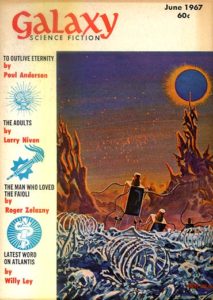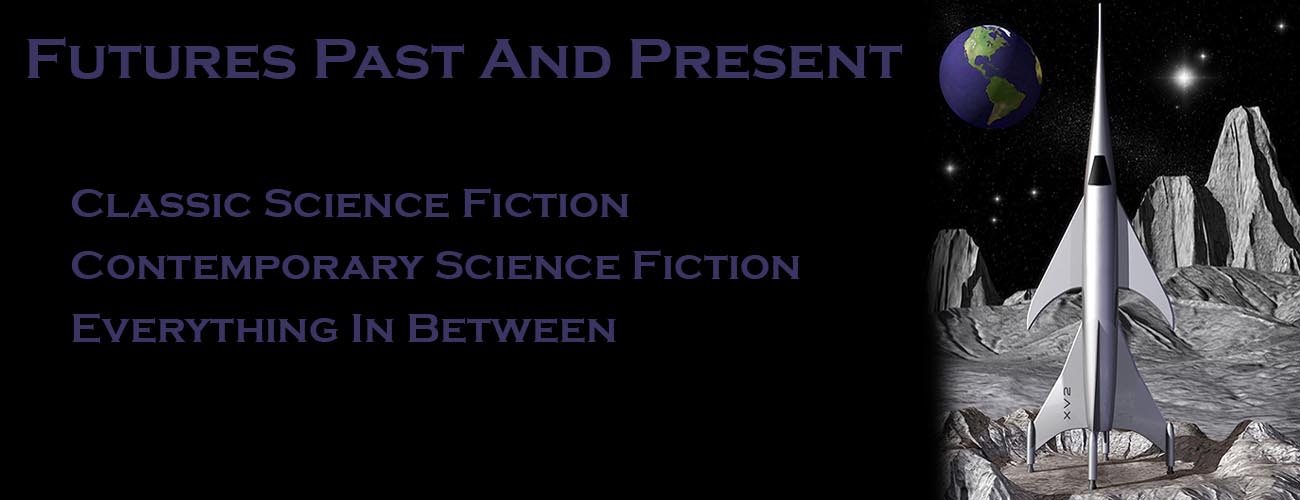 To Outlive Eternity
To Outlive Eternity
Poul Anderson
Baen
mass market paperback $7.99
ebook $6.99
This post isn’t about the entire collection, but the title story. “To Outlive Eternity” was serialized in Galaxy in 1967. An expanded version was published in 1970 as the novel Tau Zero. I read the novel approximately 25 years ago. Today being Anderson’s birthday, I wanted to read something of his that was longer than a short story, but not too long. “To Outlive Eternity” was perfect.
Anderson was a master at many forms of science fiction and fantasy. He had a degree in physics; not surprisingly, much of his hard science stories revolve around physics and astronomy concepts, one of the many reasons I like his work. “To Outlive Eternity” falls into this category.
A group of scientists and professional spacemen are in a ship accelerating towards another star system to explore a possible Earth-like planet when they encounter a nebula that has drifted into their trajectory. They survive the passage through the nebula, but not without damage. They’ve lost the ability to brake. In order to repair that part of the ship, they will have to turn off the thrust. But the engines that are propelling the ship forward are what are powering the force fields that protect the crew and ship from the Doppler shifted radiation.
In order to fix the brakes, they have to turn off the force fields. To safely do that, they need to be where there is virtually no hydrogen and the radiation background is weak. That means they need to be in intergalactic space. But in order to get there in a reasonable amount of time, they have to go faster and faster to increase relativistic time dilation. Of course there will be a number of complications which will require ingenuity and grit to overcome.
For a story that’s half a century old, it held up pretty well. I don’t buy some of the scientific tricks Anderson pulls, but I’m not sure I did when I read Tau Zero all those years ago. Memory fades; while I remember enjoying the novel version of the story, I don’t recall of the scientific justifications Anderson used in it. I’m not an astrophysicist. I’m sure some of my colleagues would find quite a bit to object to. However, I’m willing to suspend my disbelief. Anderson was a good enough writer that suspension of disbelief is a pretty easy thing in most cases.
 Lest you think this is a dry story where the science is all there is, let me disabuse you of that notion. Anderson peoples his tale with a large cast of characters. Even so, he focuses on the ship’s constable, a man who by the nature of his responsibilities has to make the hard decisions. Even when the captain can’t or won’t. The story is as much about how the constable keeps the crew sane and working to survive as it is about the scientific underpinnings. Since I’ve moved into a type of management position in my day job, I had a greater appreciation of the human aspect of the story, more than I would have at any earlier period of my life.
Lest you think this is a dry story where the science is all there is, let me disabuse you of that notion. Anderson peoples his tale with a large cast of characters. Even so, he focuses on the ship’s constable, a man who by the nature of his responsibilities has to make the hard decisions. Even when the captain can’t or won’t. The story is as much about how the constable keeps the crew sane and working to survive as it is about the scientific underpinnings. Since I’ve moved into a type of management position in my day job, I had a greater appreciation of the human aspect of the story, more than I would have at any earlier period of my life.
There are seven stories in To Outlive Eternity, including the Hugo winning “No Truce With Kings”. I’ve read that one; I’m not sure about some of the others, but I’m going to eventually read the whole book. The stories are all from the 1950s and 1960s. Those were good decades for Anderson. He was establishing himself as a writer. Science fiction was still primarily a short fiction field, and Anderson did most of his best work at shorter lengths during those years. In the 1970s, as novel came to dominate the markets, Anderson would write some of his best known works, such as The People of the Wind, Mirkheim, Orion Shall Rise, and Avatar, just to name a few.
If you’ve not read Anderson, read him. You’ll be in for a treat.
